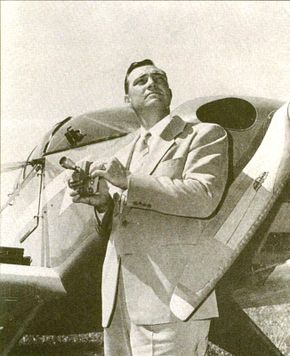The Arrival of Flying Saucers
The day after his sighting, Kenneth Arnold told his story to two reporters for Pendleton's East Oregonian. One of the reporters, Bill Bequette, put the story on the Associated Press wires. Within days, as similar sightings erupted around the country, an anonymous headline writer coined the phrase "flying saucers." But that name was not entirely original. On January 25, 1878, a Texas newspaper, the Denison Daily News, remarked on a local event that had taken place three days earlier. On the morning of January 22, farmer John Martin noted the swift passage, through the southern sky, of something like a "large saucer." The newspaper said, "Mr. Martin is a gentleman of undoubted veracity and this strange occurrence, if it was not a balloon, deserves the attention of our scientists."
There were as many as 18 other sightings of strange flying objects in the Pacific Northwest that same June 24. For example, that morning prospector Fred M. Johnson had spotted five or six "round, metallic-looking discs" about 30 feet in diameter and 1,000 feet above him. He focused a telescope on one and saw that it had tails or fins (unlike those Arnold would observe a few hours later). For the duration of the sighting -- close to a minute -- Johnson's compass needle spun wildly, stopping only after the discs headed off to the southeast.
Advertisement
Actually, sightings of silvery discs had been going on since at least April 1947, when a U.S. Weather Bureau meteorologist and his staff had tracked a large, flat-bottomed ellipsoid as it shot from east to west over the skies of Richmond, Virginia. Sightings of similar objects took place the next month in Oklahoma, Colorado, Tennessee, Georgia, and New Jersey. These incidents went unnoted in the local press until after Kenneth Arnold's sighting opened the way to publication of such stories.
By the late 1940s Air Force investigators had taken to calling such things "unidentified flying objects." This was meant to be a neutral term, but skeptics complained that the words "flying" and "objects" implied both craft and intelligent guidance. Everyone could agree, though, that this phrase was better than the silly-sounding "flying saucers," which described only some of the aerial oddities people were reporting in the United States and around the world. Some of these phenomena looked like big metal cigars or fire-spewing torpedoes; others were spheres, triangles, or V shapes; and many were simply bright lights zigzagging across the night sky.
For the next 45 years, UFOs would be the focus of ceaseless controversy, wonderment, weirdness, fabrication, derision, mystification and, once in a while, serious investigation. Throughout this article, many UFO phenomena are discussed; each story is presented from the perspective of the witness who experienced the event.
